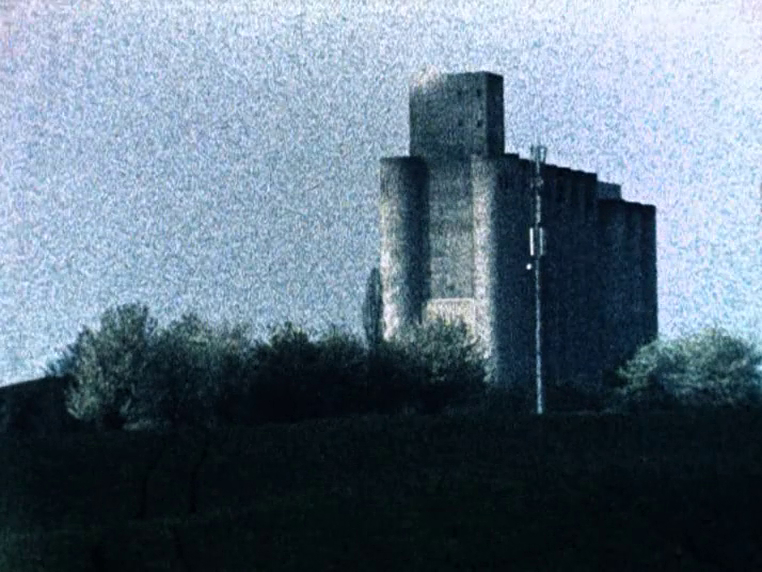
Here are a few lines from Die molussische Katakombe (The Molussian Catacomb), an antifascist novel built around conversations between Olo and Yagussa, two political prisoners of the fictional fascist state of Molussia, written in the early 1930s by Günther Anders:
“One day,” Olo said, “the silver workers sent a representative to Prem to inform him of their intention to strike. Prem was annoyed. ‘You are nothing to me!’ he shouted at the spokesperson. ‘You saboteurs, you negative elements!’
“‘The positive,’ the representative quietly responded, ‘The positive is invisible. You don’t feel the air that you breathe. Only if it is taken away from you, you realize its value. Only if you lack it, you recognize its necessity. And we are air for you.’”
“That the positive is supposed to be invisible,” Yegussa grumbled after a moment, “confuses me again and again. We are materialists, after all: What is there is visible and what isn’t there is invisible.”
In response Olo asked: “What does your health feel like?” Yegussa examined his body, and realized to his surprise that he had not felt his body before. His body had been forgotten.
“Like nothing at all,” he slowly responded.
“But the negative: sickness?”
“It is perceptible.”
“Peace?”
“It is imperceptible.”
“But war is obvious. Work: invisible. But the strike?”
“Makes us visible.”
“Visible for whose eyes?”
“For the eyes of the others.”
“And even for our own. Concerning materialism, this is it. When we show ourselves, we show ourselves as the material prerequisite of the others.” Yegussa was astonished. “Besides many other things,” concluded Olo, “materialism is a theory of the invisible, and is about those who have a material interest in the invisible above them and the invisible below them. The former enjoys considerable appreciation among them, but the latter is incomparably more important to them.”
“I see,” said Yagussa, and the darkness around him was illumined.
These lines are extracted from the Nicolas Rey (not to be confused with Nicholas Ray) film Differently, Molussia (2012), a remarkable work of ostranenie which pairs fragments from the novel with fragments of landscape (alien, modernist buildings, lonely hillsides, dark waterways, &c.) shot on expired 16mm film. The English subtitles created for the film, to my knowledge, constitute the only English translation which any portion of Anders’s novel has received, which is why I go to the trouble of transcribing them. The main purpose of this post is simply to share the above excerpt, because I think it’s beautiful and fascinating and deserves to be known to more than those with the resources and inclination to watch astringent post-Straub-Huilletian arthouse cinema, but I feel it would be remiss of me to not contribute some sort of original commentary and interpretation as well. Therefore: the novel is called the Katakombe, specifically, because that is where Olo and Yagussa are; not simply imprisoned, but in a “pit” far beneath Molussia. The darkness is such that they are, themselves, literally invisible. This extends Olo’s words in an important way: because they are materialists, they would no doubt be considered “negative elements”, but because they are not free, because they have been forced into social and even physical invisibility, in a very real way they are actually “positive elements” in relation to the social machinery of fascism. Their imprisonment allows for the sublimation of their real existence (as the prerequisite for the existence of the bourgeois, and, by extension, the fascist) into a safe abstraction (the “Prisoner”). That is, when Olo and Yagussa are free they are intolerable, “negative,” because they are visible and because their visibility threatens to make others “below” the bourgeoisie visible, but imprisoned, without they themselves having changed in any way, they become beneficial, “positive,” because in this state of enforced invisibility they can serve as whatever sort of antagonistic shibboleth the state wishes to make them into.

One more note: as Rey tells it, the first version of the Katakombe escaped detection by the Gestapo only by being wrapped in a map of Indonesia to which its would-be publisher had added a non-existent island labeled “Molussia”. Although it was confiscated along with the publisher’s other manuscripts, it was ultimately returned, apparently unread, because it had appeared to be simply a travelogue. By disguising itself as part of the mundane flow of “apolitical” information which continuously passes through printing presses under any regime, it became invisible.